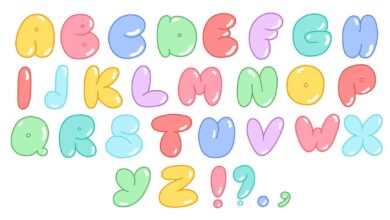Animal-Assisted Therapy: A Path to Recovery

In recent years, mental health professionals have increasingly embraced holistic and alternative approaches to therapy. One such approach that has gained considerable attention is animal-assisted therapy. For many, the presence of animals offers comfort, connection, and emotional healing in ways that traditional therapy methods alone may not. Whether it’s a dog, horse, cat, or even a rabbit, animals can reduce stress, ease anxiety, and help people on their journey to recovery. But what exactly is animal-assisted therapy, and how can it support mental health recovery? Let’s dive into the benefits and explore how this therapeutic approach works.
What is Animal-Assisted Therapy?
Animal-assisted therapy (AAT) involves incorporating animals into the therapeutic process to help individuals with various physical, emotional, or mental health challenges. This type of therapy is typically guided by a trained therapist who uses animals to engage patients in different activities, promoting emotional growth, stress relief, and even physical rehabilitation.
While most people associate animal-assisted therapy with dogs or horses, various animals can play a role, depending on the individual’s needs and the goals of therapy. For example, equine therapy uses horses to help participants develop trust and self-awareness, while therapy dogs can provide comfort and reduce anxiety during emotionally challenging sessions. The key benefit of AAT is the unique bond that forms between humans and animals, a bond that often helps patients open up, relax, and engage more deeply in their therapeutic journey.
Why Animals in Therapy?
The concept behind animal-assisted therapy is relatively simple: animals provide unconditional love, emotional support, and nonjudgmental companionship. This can be incredibly therapeutic for people who are dealing with anxiety, depression, trauma, or other mental health issues. Here are a few reasons why animals make excellent therapeutic partners:
Non-verbal communication: Animals communicate through their behavior, body language, and energy, which can be comforting for individuals who find it difficult to express themselves verbally.
Unconditional affection: The bond between animals and humans is often free of judgment or bias. This can help individuals feel more comfortable and open during therapy sessions.
Stress reduction: Physical contact with animals, such as petting or grooming, is scientifically proven to lower stress levels by reducing cortisol, the stress hormone, and increasing oxytocin, which promotes feelings of bonding and relaxation.
For many, these benefits can be the key to unlocking emotional healing, making animal-assisted therapy a powerful tool in recovery.
How Animal-Assisted Therapy Supports Mental Health
The therapeutic impact of animal-assisted therapy extends beyond the surface-level comfort of spending time with a furry companion. There are several tangible mental health benefits that come with incorporating animals into therapy:
1. Reducing Anxiety and Stress
One of the most immediate effects of animal-assisted therapy is its ability to reduce stress and anxiety. Studies have shown that interacting with animals can lower heart rates, reduce blood pressure, and alleviate feelings of stress. This makes therapy sessions more approachable, especially for individuals who may feel nervous or anxious about the therapeutic process.
For instance, therapy dogs are often brought into hospitals or mental health facilities to provide comfort to patients during stressful times. The simple act of petting or cuddling with a therapy animal can trigger the release of serotonin and dopamine, two chemicals in the brain associated with happiness and relaxation.
2. Enhancing Emotional Regulation
Animals are highly sensitive to human emotions and behaviors, which makes them excellent partners in helping individuals regulate their feelings. In animal-assisted therapy, participants can learn to identify their emotions and practice self-regulation. For example, if a person is feeling anxious, a dog may sense their heightened emotions and respond by becoming more affectionate or calm, helping the person relax.
Horses, which are commonly used in equine therapy, are particularly adept at mirroring human emotions. Their response can help individuals gain a deeper understanding of their emotional state and learn how to manage difficult feelings like anger, frustration, or sadness.
3. Building Social Skills and Trust
For those struggling with trauma, PTSD, or social anxiety, animal-assisted therapy can provide a low-pressure way to build trust and develop social skills. Animals are non-judgmental and offer companionship without any expectations. By learning to communicate and form bonds with animals, participants often develop skills that can later be applied to human relationships.
This is especially important for individuals who may have difficulty trusting others due to past trauma or neglect. Working with animals allows them to rebuild trust at their own pace, in a safe and supportive environment.
4. Boosting Confidence and Self-Esteem
Completing tasks that involve caring for or interacting with animals can be a great confidence booster. In animal-assisted therapy, participants may be asked to feed, groom, or walk a therapy animal. These simple tasks give individuals a sense of accomplishment, helping them feel more capable and in control of their environment.
For people who struggle with feelings of inadequacy or low self-esteem, these positive interactions can build a stronger sense of self-worth. The care and responsibility that comes with looking after an animal can also foster a sense of purpose and empowerment.
5. Promoting Mindfulness and Presence
Animals live in the moment, and their behavior reflects that. Being around animals encourages participants to stay present and mindful of their surroundings. Whether it’s watching a cat slowly stretch and yawn or noticing how a horse reacts to a new environment, these moments allow individuals to focus on the here and now.
Mindfulness, the practice of staying present and focused, is a valuable mental health tool that can reduce anxiety, stress, and depression. Animal-assisted therapy offers a natural way to cultivate mindfulness, which can have lasting effects on a person’s mental well-being.
Types of Animals Used in Therapy
Different animals can offer unique therapeutic benefits, depending on the individual’s needs and the goals of therapy. Here are some common animals used in animal-assisted therapy:
Dogs: Known for their loyalty and affection, therapy dogs are commonly used to help individuals reduce stress and provide emotional support.
Horses: Equine therapy involves working with horses to promote emotional growth and self-awareness. Horses are particularly sensitive to human emotions, making them excellent partners in therapy.
Cats: Cats can provide comfort and a calming presence, especially for those who prefer quieter or more independent animals.
Small Animals: Rabbits, guinea pigs, and other small animals are often used in therapy sessions for their gentle and soothing nature.
Birds: Birds, particularly parrots, have been used in some therapy settings to encourage communication and provide companionship.
FAQs About Animal-Assisted Therapy
Q1. What conditions can animal-assisted therapy treat?
A. Animal-assisted therapy can be helpful for individuals dealing with anxiety, depression, PTSD, trauma, and social anxiety. It is also used in physical rehabilitation and with individuals who have developmental disorders like autism.
Q2. Is animal-assisted therapy scientifically supported?
A. Yes, numerous studies support the effectiveness of animal-assisted therapy in reducing stress, improving emotional regulation, and enhancing social skills. Research has shown that interactions with therapy animals can increase the production of serotonin and dopamine, which contribute to feelings of happiness and well-being.
Q3. Do I need to love animals to benefit from animal-assisted therapy?
A. While a love for animals can enhance the experience, it’s not a requirement. Many people find comfort in animal-assisted therapy even if they weren’t previously drawn to animals. The presence of a non-judgmental companion can help people feel more at ease during therapy sessions.
Q4. How long does animal-assisted therapy last?
A. The duration of animal-assisted therapy depends on the individual’s needs and the goals of the therapy. It can be used as a short-term intervention or as part of a long-term treatment plan.
Q5. Is animal-assisted therapy suitable for children?
A. Yes, animal-assisted therapy is often used with children, particularly those with behavioral issues, trauma, or developmental challenges. Working with animals can help children develop social skills, emotional regulation, and a sense of responsibility.
Conclusion
Animal-assisted therapy has become a valuable tool in modern mental health care, offering a unique and compassionate way to support individuals on their path to recovery. Whether it’s a therapy dog offering comfort during a difficult time or a horse helping someone build emotional resilience, animals have a special ability to heal. As research continues to highlight the benefits of animal-assisted therapy, it’s clear that the human-animal bond can play an integral role in promoting mental health and emotional well-being.
For those seeking a non-traditional form of therapy, working with animals may be the perfect complement to their mental health journey.
Stay In Touch For More Updates And Alerts: Ogly Buzz





